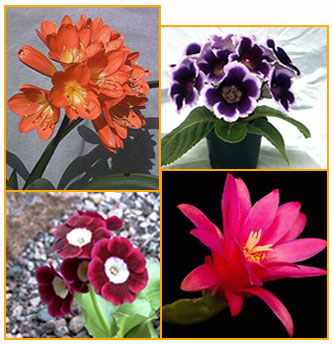I feel now that I wake to sunshine pouring through the windows and a sky the blue of a robin’s egg reminds me of the literal lightness of being on planet earth. Light has everything to do with how we feel and how our gardens grow. There are rules about how much light plants need, but you have to use your head.
I’m planning flower and vegetable gardens for our new home, a property with a lot of big old shade trees. It’s difficult to judge where there will be enough light for either when the sun moves to its overhead summer position. Most flowers and vegetables need eight and can take twelve hours of light.
How much light does a plant need?
You can find out the light needs of a plant by looking at the light symbol on the plant tag or seed packet:
- Full sun: the plant can take light from sunrise to sunset, will be just fine with eight hours, and can make do with six hours of direct full sun.
- Semi-sunny or part shade: the plant will do well with four to six hours of direct sun, or dappled light all day.
- Shade: the plant can succeed with only two to three hours of direct sun a day, or half a day of bright dappled light.

That’s useful information, but the light in your garden, your region, and the inside of your house for that matter, never fits these descriptions exactly, and anyway, light varies from month to month throughout the year.
In spring the sun not only rises earlier and earlier, it also moves from fairly low on the horizon toward an overhead position. So the light available in any given spot — except one out in the open with nothing around to cast a shadow, changes with each season of the year. And the intensity of the light (and heat) also differs from region to region. Sunlight in the South West is more intense and hotter than in the North East, one reason native vegetation differs from place to place.
You can use the knowledge in that table to decide how much “extra” sun or shade your plants can take. A tropical plant said to need part sun is apt to accept more direct sun in a window in Chappaqua, New York, than in a window in Orlando. Pansies said to thrive in full sun cooked to death in my warm Washington, DC, garden by mid May. Planted in the dappled shade of a flowering cherry, and growing in moist humusy soil with a mulch cover lasted longer. Here in Connecticut they can go all summer in the sun.
There are so many other variables the “rules” sometimes hardly seem like rules. In the North, plants growing in full sun often can stand the cold more than plants in part shade. Snow cover is tremendous protection from cold. Deep snow cover allowed the tuberose in my Vermont garden to survive winters that killed them in Washington where there was much less intense cold, but almost no snow. Moist humusy soil and a layer of mulch enabled plants in DC to stand more intense sun and heat than if they were growing in porous, sandy soil without mulch.
So what’s for real? The plants themselves tell the tale. Out in the garden not enough sun can make plants grow tall and spindly, fail to flower or fruit, and flop forward. Too much direct sun can cause sunburn in plants as well as people – the green leaves turn whitish and wither.
The same thing happens indoors where the plants have the advantage of steady temperatures. Seedlings waiting for time to move to the garden grow tall, thin, and tend to flop over at the slightest provocation unless they have at least 12 hours of good direct light. Growing 18 hours a day under grow lights they grow stocky, sturdy and dark rich happy green. A glassed-in sun porch facing south is second best: it admits as much light as a greenhouse from the side, but less overhead.
And yet, some flowering plants we associate with the outdoors do very well in the light that comes through south clean windows. In the early fall I plant petunia seedlings in a south window and they bloom all winter long.
Next: The Literal Actual Lightness of Being